|
8/17/2016 Three Poems by Carl ScharwathWayfaring City rain breathing Radiation from the storm clouds As tar black feather balls Disguise the avenue. Ghosts in the metropolis Leer from empty buildings Poisonous tomb stones Rising in the shadows Devout of humanity Lifeless and forsaken On what journey The victim returns? ADMONITIO You are the genesis of today The cancers of a desperate heart etched in the loss of hope. Vision doubled, fractured fragments give warning. Blood rushes in a sojourn. Following the Daughters of Zion adorned in self-alienation to a future world, without history. AXIS The passion shall escape While the past, Flickering hungry Is Bleached invisible. You gaze at The unfeigned light. Walking out determined From the world. Knowing how it feels To be broken And have a black hole On your time-line. Bio: Carl Scharwath, has appeared globally with 80+ journals selecting his poetry, short stories, essays or art photography. He won the National Poetry Contest award for Writers One Flight Up. His first poetry book is 'Journey To Become Forgotten' (Kind of a Hurricane Press). Carl is also a dedicated runner. 8/16/2016 Interview with Artist Laura FritzAHC: Can you tell us a bit about your process, themes & inspirations? Laura: These are uncertain times and my work meticulously explores the mechanisms and peculiarities of human cognition in response to the uncertainty we find in the intersecting spheres of the organic and manmade. I build custom furniture and objects and utilize light and video to create installations ergonomically designed to play directly upon the expectations of the viewer and to create an immersive experience of questioning, empathy and heightened awareness. I’m inspired by the uncertainties one encounters in nature, science and the domestic, and the human response. My process? I’m very empirical, but also improvisational. The process is a little like gardening- planning is involved, but once I have some elements together I have to allow the process to develop as it will, given the material attributes, etc. I then decide which elements are the right ones to use, and I have to make accommodations as I see fit. There is an expansive sense of mystery that is cultivated in the work. Part of that cultivation is being very meticulous, but I don’t want to control it so much that it becomes dead- for example, trying to juxtapose more controlled elements like boxes with elements that are not possible to control such as animals. When I work with animals for my video installations I have an idea of what I want the animals to do, but they always surprise me with what they actually do. It is never exactly what I planned for, but it ends up being better because it is what comes naturally to the animal, its intrinsic and not possible for me to script. It is the same method that I use with my object making. Instead of creating odd looking objects I choose to cast from particularly visually striking botanical source materials, because nothing anyone could come up with could ever be as idiomatic or intricate. I do ascribe to the old saying that truth is stranger than fiction. I then mutate and amplify those intricacies. These forms have their own logic which I transpose and reapply into a different context, much the same way scientists find and develop new drugs. I let the process direct itself, but I’m a ruthless editor and I don’t let the project get away from me. I like to place these elements out of context into a stripped down built environment, so there is wide opportunity for interpretation. This, along with the stillness of the space, may cause the viewer to sense that they are witness to a purposeful process at play. I am interested in the cool tension that results from the efforts of the mind to create connections between disparate elements before they are understood. Scientists refer to these cognitive phenomena as apophenia. AHC: What first drew you to art? Was there a specific moment in your life or turning point where it became clear to you that you were being called to create? Laura: It was more like a series of moments that came together to convince me over time. There was the time that I discovered lighting and mood at age 4 in the grocery store. One aisle, which happened to be the peanut butter and jelly aisle, had its lights go out. While the rest of the store was lit with the usual florescent lighting, this aisle was illuminated only by whatever light came through the jars of jelly from the aisle next to it. The various jellies were glowing, punctuated by the dark opaque peanut butter jars, and the area had such an exciting and mysterious feeling. I remember running back and forth within it, so enveloped in the experience. A few years later I realized that I liked creating altered situations of this kind for others. My cousin had the coolest Star Wars toys that would light up, and at family gatherings I would create what I called haunted houses in his room. I would lead various family members through on a planned path in the darkened room from one “display” to another and see how they would react. I remember for a period of time feeling that this was extremely important to complete when I was over at their house, even though there was no logical reason that it would be necessary. This is the type of determination it takes to be an artist. AHC: Could you talk about your notion of peripheral objects, that is all of the things that exist at the corners of our perception, that make up our world & experience as much as the main events or attractors, but that we seem to pay less attention to? Laura: I’m very interested in the choices we make about what is considered peripheral and what is the main focal point, the hierarchies we assign. In my installations I like to raise questions about what the focal point actually is, and whether the viewer can trust their perception. For example, my installation Evident (2009, New American Art Union) consisted of 3 objects in a darkened room, giving the impression that the viewer is to move from focusing on one object to the next, however video footage of intermittent insect activity projected from a box on the floor sprayed throughout the gallery unpredictably. At any point a viewer could catch a momentary glimpse of an insect out of the corner of their eye, but by the time they could focus their attention to that spot the insect would have moved on. Evident, installed in 2009 at New American Art Union, Portland, OR For my work that involves reflective surfaces like Ingress, which I created for the show Transparencies at the Des Moines Art Center, the mirror-like surfaces both expand and contract the field of vision. Even though the tables are large the reflective surfaces cause the space inside the cases to seem much larger. The awareness of contracting and expanding space, and of the inhabitants of the space, is central to what I do. It is architectural, revealing the mazes we become accustomed to as well as those we are less familiar with or had been unaware of. Ingress, in the group show Transparencies at the Des Moines Art Center, Des Moines IA (2013.) AHC: Immersion in the side car of experience is the feeling I get from exploring your work, that quick passing detail that happens faster than one can cognitively digest or process, in exploring these aspects do you find yourself often paying special attention throughout the day to the peripheral events of life around you? Laura: Often things that may seem mundane or even flawed to most tend to stop me in my tracks, then upon closer examination I may see something strikingly strange or find a sublime thread running through it. I like to create situations for the viewer to “notice” something in this way. Through use of context in architectural or display methods I highlight some kind of peculiarity or intrinsic quality that appears to have its own logic. Take, for instance, bees. They are everywhere but we don’t pay very close attention to them, despite how crucial they are to our food supply. They have such a purposeful way of moving, even though at first glance they seem erratic. When we take the time to really focus on them, patterns of behavior start to emerge and even those are barely understood. My most recent project, Alvarium, which I installed at the University of Oregon in Portland, involved honey bee footage projected within a hive-like form suspended from beams that I designed with the building's architecture in mind. I shot the video at the Oregon State University Honey Bee Lab, transferring the idiomatic patterns of bee movement to the structure to give the appearance of a hive indoors and isolated from the natural surroundings. This highlights their precarious position in the world and how as species we rely on each other in ways that aren’t fully understood. Typically, we encounter lone bees that are foraging for pollen and we don’t see their grand coordinated efforts, but I wanted to show how an entire hive responds. So I captured a hive collectively responding to a disruption (it is something the lab does to study and care for the bees regularly). At first it seems chaotic and then they organize themselves into what looks like continents. The bees are incredibly active and purposeful. I’ve had a variety of reactions to the piece- Sometimes people were actively viewing the work, while other times they hung out below the installation to work on their own project, adopting a similar work ethic. When actively viewing the piece visitors have tended to cluster under the “hive”, often empathizing with the situation that they believe may be unfolding above them, creating their own narratives. Alvarium, installed at University of Oregon, Portland campus. AHC: Who are some of your artistic influences? Is there anyone outside of the art world who has had a huge impact on your work, writers, filmmakers, philosophers etc? Laura: A couple of my biggest artistic influences are Eva Hesse and Donald Judd. Often, I contrast organic entropic, surreal elements with a more empirical and geometric approach so these seemingly different influences complement each other. Overall, I cultivate a certain very expansive, mysterious mood through light and structure with a dry sense of humor so others like Kurt Vonnegut, Robert Irwin, Mies van der Rohe, Beethoven, Alfred Hitchcock and Giorgio de Chirico have caught my attention at formative moments. Still it is all filtered through life so the garden and interesting interior spaces capture my attention and endlessly inspire me. AHC: What is the first work of art you encountered that took your breath away? Laura: When I was in high school I first encountered a book of the Helga Paintings by Andrew Wyeth, and was captivated by the mysterious, otherworldly yet intimate mood of the paintings. I was drawn to the sense of composition and attention to certain details, such as the light catching a stray strand of hair. There was a feeling in the paintings of some kind of undercurrent that was fundamentally important, but not explained. Not all details are provided, so the viewer had to draw their own conclusions. AHC: Do you have any upcoming exhibits or new projects you'd like to tell people about? Laura: Currently I have work in a group show “The Color of Memory” at Jeffrey Thomas Fine Art in Portland. The piece is called Spektive (specimen V017) and involves a cast organic form or “specimen” resting on a small minimalist shelf designed to capture, reflect and hold light. The shelf has a mirrored layer that reflects light up to the organic form, and the organic form is cast out of a clear resin that holds light to the point of appearing to glow. The piece is really using the gallery lighting to create more light within itself. Spektive (specimen V017), completed in 2016, up currently at Jeffrey Thomas Fine Art in the group show "Color of Memory".
I’m also forming plans to show more expanded versions of Alvarium that address space even more, in addition to a desert piece in California. To find more work by Laura Fritz and for further information visit her website at www.laurafritz.net 8/14/2016 Grandmother by Aswin VijayanGrandmother She sits on the porch on a creaky stool leaning on the red armrest looking out at the world passing by her eyes never saw much ears failing now but in the bicycle bell of the newspaper boy she hears how the world fares the sun seeping through the trees shows her lives no one ever sees in the void of the house she lives a hundred lives past converses fluently with an uncertain future leaving the present a muddled mess. 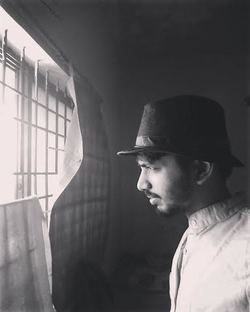 Bio: Aswin is a poetry enthusiast and a student of poetry. Recently graduated and incorporated into corporate world, he is keen to capture daily experiences in verse. One of his poems was published in Deccan Chronicle. Blogs at: karmicinjustice.blogspot.com 8/14/2016 Art + Text by Ella Russell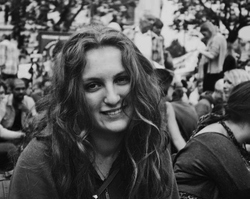 Bio: Ella is a maker of films and stories from London, who is now living, studying and creating things between the city and Glasgow. Her film work often focuses upon social issues and experiments with audio and methods of creating narrative without being a forceful teller of tales. Sometimes film is there to cast light instead. The stories are short and rambly. 8/14/2016 Four Poems by Joseph V. MilfordSecret Worlds Are Hidden In Such Places in the fading coolness of the other side of the pillow in the small of a woman's back, under the golden peach fuzz there in the syntax of an almanac whose culture of ziggurat has perished under something heavy falling right before the impact crushes it in the sinking Atlantis of your eye after I tell you of the lost continent in silver itself—between the ridges of the most base coin's edges between a hair and a hairsbreadth and a moment's acquiescence between the spinning blades of the engine fans on any highway between sternum and backbone the unchartable mesa between two sand grains an infinite cornucopia the electric world hidden there between membranes I lean down let my ear hover over a pool of quiet water Tragicomedy I don't need any manna I just need some sleep. I probably lose things in the bargains of necessities or niceties, which I think are like hawks hovering above highways. Mainly, I want to show you my monsters and still have a decent afternoon. This is not possible, especially when the hydra asks nine questions of you, and your answers are decapitated. I spit no venom—my greatest sin is making family of people who I never asked if I could do so. Then, I sit at the keyboard cajoling a universe in me, like a lawyer making a plea to a higher power. Just because you didn't know any better or you meant better doesn't mean you didn't foul up something as simple as ice-cream. Lure I was always afraid as a boy That when my father cast out He would tear out my eye with the hook. As an adult, I thought of this In some Freudian way—some fear I had Of him hurting me or going away Or I was bad at fishing if he ever hooked Me. That is what I thought. It would have been, Of course, my fault. Those hooks we all have in our lips Twine dangling from them in life, Those stories obvious to anyone who kisses us. Now I know new secrets-- My father never needed to rend my eyes. I was the fish he longed for—the self Of casting—the rip and rod and reel And abandon—how he thrust into my mother With love or not—how he swam away From us and her through weed and keg. And I know now that those hooks were for Ripping out my eyes; they were for Making new lures, new orbs For this brazen flotilla I ride towards His hospital canoe. I was always afraid as a boy That when my father cast out He was never coming back home, And he didn’t. And I didn’t. And West Point Lake dried up. Magnolia Climbing You say pendulum I say leaf on end of spider-spit sways You say compass I say pine needle in puddle near iron ore You say astrolabe and sextant I say circle of pear’s rump on triangular shale shard You say padlock I say the lips of the chameleon You say computer I say beehive You say combustion engine I say child on sugar You say why And I see a because in nothing special You say mandala I say “duh” You say electric guitar I say quasar harp We tend to mistranslate when we argue a lot Or argue over mistranslations like ergot Festering about to cause mass hallucinations You say skyscraper I say ziggurat You say catapult I say crackerjack Your whole life You tried to break out of the snowglobe (Guess what--the confetti is all over us) My whole life I burrowed under the snow Looking for utopia Who knew you would show up At the same time as me With a pinecomb of history As I held a ruddy pear of poetry We immediately kissed And then went running across the planet Looking for good climbing-trees 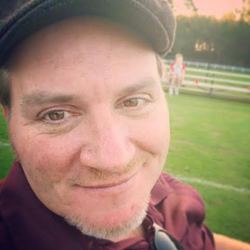 Bio: Joseph Victor Milford is a Professor of English and a Georgia writer. His first collection of poems, Cracked Altimeter, was published by BlazeVox Press in 2010. He is the host of The Joe Milford Poetry Show, a co-founder of BACKLASH PRESS, and the editor of RASPUTIN: A Poetry Thread (a literary journal of poetry). https://twitter.com/joemilfordpoet http://jmilford2005.wix.com/josephvmilfordpoethttp://rasputinpoetry.blogspot.com/ http://www.backlashpress.com/ 8/13/2016 Two Poems by Peter MaglioccoThe Sun Goddess of Instagram Who would goad us before seeking death in the everyday world misspent miracles occur for the outcasts leading homeless lives in cities. There street people dance at the feet of Instagram beauties, photo-bombing them for the rebirth of genuine thrills beyond their shopping cart booty. Do you hear them shouting for you at Venice Beach every day? They seek your money, your flesh to regale as Rodeo Drive eye candy, before extending needy palms blistered by maritime misadventure & hand jobs in underground parking garages (where flotsam from sexual detritus is pooling grime with quickie-seed) after you sunbathe all but nude boobs-up, wearing bikini & shades on a beachside patio lounge chair. They would goad you to show yourself fully, for a surreptitious flash- photo, but you're skilled at disappearing as the sun fades across blue horizons, leaving peeping orbs to shadow sight for a long nocturne of eyes wide shut.. The Divine Vision Just the way the light hits you in insuperable being's fact from another desolate photo session the wrath of Caligua's vibes befoul in half-hearted pictorial smiles for psychic chasms our egos inhabit slyly Into what is appropriate to his dying ocular mega-lens absorbing my visual content & leave marred edges intact whistling as he adjusts shutter speed I see Matthew Brady remnants scowling through temporal diffractions my ferrous features frizz-out into Poe's dollar store daguerreotype dragging all the scurrying ions Into my pixel-pout where nothing matters but the disappearing image of "Self" scanned by throwback technology into the Cyclops' original eye first blinded by caveman god 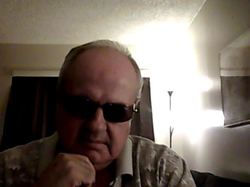 Bio: Peter Magliocco writes from Las Vegas, Nevada, where he's been active in small press circles for several years. He has recent poetry at THE BEATNIK COWBOY, DEAD SNAKES, PYROKINECTION, THE NEGLECTED RATIO, and elsewhere. His new poetry book is Poems for the Downtrodden Millennium from The Medulla Review Publishing. 8/12/2016 Interview with Artist Lesley DillPhoto courtesy of George Woodman AHC: Can you tell us a bit about your process, themes & inspirations? Lisa: I have to say that I am like all artists who have a continual desire to make things. At this point in my life I want my art voice to especially contribute to the world of art-making. What a silly pressure is this. Yet, it is the underlying current in the ocean that wakes me up in the morning. Then, on top of that, is the theme I am investigating. I seem to need a big theme, so it can hold my mind, hold a range of materials, and range of scale. I wish sometimes that I could have a small intimate groovy theme…just image & text .But ..images and text…about What? In the past few years I have done large exhibitions/projects : my full length opera Divide Light in 2008;Hell Hell Hell Heaven Heaven Heaven: Sister Gertrude Morgan and Revelation exhibit in New Orleans in 2010; and Faith & the Devil in NYC in 2012. So now for the past 15 months I have been researching, reading, reading, reading the literature of America in the early to mid-19th century. Jonathan Edwards, Nathaniel Hawthorne, Walt Whitman, Emily Dickinson, John Brown, Harriet Beecher Stowe. I grew up in Maine, and my ancestors came to New England in 1670. Many of them were ministers who got their training at Yale and Harvard and many were abolitionists. In my studio now, I am making large sculptures, large, medium paintings and drawings, and small figurative sculptures in marionette form of the people of this era. I might title this work The Wilderness. Faith and the Devil Installation (Big Gal Faith) AHC: What first drew you to art? Was there a specific moment in your life or turning point where it became clear to you that you were being called to create? Lesley: When I was 11, 12, 13 etc., I learned how to weave, hook rugs, and make prints from great Aunt Peggy and great Aunt Dorothy, who lived in Gloucester Mass. I loved working with my hand, and I also loved learning and reading. As a child I would go to the library and take out 5 books every week. In college, I was an English major. When I went back to get a Master’s degree –I got an MAT in teaching, so I could make a living- and this degree was in teaching art. I thought that would be my life--Teaching and teaching art. After teaching high school art for a few years, I felt this urge rise up my 28 yr. old spine. A strong electrical ethical urge. It seemed to point me in the direction of art so I went to grad school at MICA, then moved to NYC. Thus, bit by bit the call to make art interspersed with the doubt to make art, and bit by bit I somehow became confident in the call. Divide Light Opera AHC: One of your pieces, which I love, is called "Dada Poem Wedding Dress" and I sense that Dadaism has had some strong influence on your work, could you talk some about that? Who are some of your other influences? Lesley: In the Dada Poem Wedding Dress, I was inspired by the “Bride Stripped Bare by Her Bachelors even “by Marcel Duchamp. I wanted to do a performance piece that addressed this rather misogynistic title. Dada Poem Wedding Dress In the performance, 4 women gently ripped off a dress with the language of Emily Dickinson on it to reveal a confident standing woman totally painted with the language of the poem “The Soul has Bandaged Moments.” We women midwifed this image of ourselves revealing ourselves as women of strong language and image. Sister Gertrude Morgan Installation AHC: You work with a lot of different mediums, clothing, puppets, sculptures, performance as well as photography and drawing, the style & detail of each one of these being so incredibly unique, do you prefer one of these mediums or approaches over another? As you're working out an idea do you know ahead of time which medium it will work best in? Lesley: I love the tactility, actual and metaphorical in different materials. I don’t know,.. it seems things just emerge from the mind for me. Ideas come and resolve when I am on the subway, when I am watching Game of Thrones on tv, when I am reading. Dog #2 (The Beast) Puppet
AHC: Do you have any upcoming exhibits or projects you'd like to tell people about? Lesley: I am happy to say that Tandem Press and I are doing 9 pieces: Editions of 2 sculptural puppet/dolls, 3 etchings, and 5 photo-based prints. I am doing a project in Rajasthan, India in February 2107, a project and exhibition in Detroit in April 2017, and an exhibition in Colorado in 2018. To find more of Lesley's work and for further information visit her website at www.lesleydill.net 8/11/2016 Interview with Artist Lisa AdamsAHC: Can you tell us a bit about your process, themes & inspirations? Lisa: Like any artist who has been practicing a long time, my process, themes and inspirations have changed over the years. For the past ten years my process involves using images from my immediate environment as well as those conjured from my imagination. Ranging in scale from twelve inches to twelve feet, I always paint in oil on a smooth surface, either on canvas or panel or canvas stretched over panel. I include both representational imagery as well as abstraction. Reoccurring themes in my work are that of the natural environment and the human-built world, their collision and ultimate integration, if only by default. Rather than presenting a factual narrative, my work uses metaphor, perception, and imagination to merge my experiences of these worlds into a new, post-urban reality. Dark Star 2014-15 oil on canvas over panel 60 x 84 inches My inspirations are many, from simple things in nature like a pinecone, to something more impactful like the landscape of the Salton Sea. I am drawn to images of renewal and beauty that might emerge from an imagined post-apocalyptic world. It’s the combination of natural beauty and evidence of human disruption that peeks my imagination. I have found a way to accommodate, meld, and come to terms with these disparate worlds. My work consolidates and then describes the role that memory and what I call slow time play in my emotional responses to my physical environment. Caput Mortuum 2015 oil and spray paint on canvas over panel 40 x 42 inches AHC: What first drew you to art? Was there a specific moment in your life or turning point where it became clear to you that you were being called to create? Lisa: Having been a very obsessive child, I came to art quite young, maybe two or three years old, so I’m told. My earliest memories at about age five, were of laying under the dining room table and chairs and creating intense drawings of animals, cars, roads, trees and houses, in pencil, on the underside of the furniture. I was also fond of collecting categories of images from magazines, like birds or eyes, carefully cutting around each image and gluing them down on construction paper in straight rows. I was always busy but hadn’t yet called myself an artist. Borderland oil on canvas over panel 60 x 144 2015 When I was ten, I saw a reproduction of Salvador Dali’s painting, The Persistence of Memory, in a library book at school. I’d never seen anything like it and remember thinking to myself, “Wow there are people out there who think like that?” In an attempt to make similar work, I did a bunch of drawings of melting clocks and put them in cheap, little gold frames and hung them on the wall in my room. It was at that point I called myself an artist even though I’m not sure I knew what that really meant. No one in my family or neighborhood were artists. The Mire of Epiphany 2013 oil on panel 48 x 60 inches AHC: Who are some of your influences? Lisa: There are so many! I would have to say some of the surrealist painters, such as Max Ernst or Salvador Dali, the DADA artists Duchamp and Picabia, the Russian Constructivists, the Bauhaus theater of Oskar Schlemmer, the films of Werner Herzog and Andrei Tarkovsky, philosopher Maurice Merleau-Ponty, science fiction writers Phillip K. Dick and James Howard Kunstler, more contemporary artists like, Susan Rothenberg, Philip Guston, Llyn Foulkes, Kristin Calabrese, Robert Gober, Jenny Saville, Albert Oehlen, Peter Doig, Marlene Dumas, Kelly McLane, Henry Taylor, Jon Rafman, and on and on. Portentous Rhapsody 2013 oil on panel 20 x 48 inches AHC: Where do you find the inspiration for your pieces? Lisa: Inspiration is a curious thing and I rarely think in terms of inspiration. For me it’s more like just being in the world with the eyes and mind of a keen observer. One of the tools I use to observe the world is my iPhone. Though I would never consider myself a photographer, I take a lot of photos of things I see in my immediate environment in downtown LA, like graffiti, concrete, asphalt, architectural detail and homeless encampments. That said, I also have a direct experience of nature by spending time in Griffith Park, at the L.A. River and in the Angeles National Forest, which is only about a 45 minutes drive. Esperanza Valley 2015 oil on canvas over panel 60 x 72 inches In the1990s and 2000s, I traveled extensively and travel is always a great resource—new languages, cultures, landscapes, buildings, food. etc. I would love to go to Iceland one day. Drowning Out All Birdsong 2013 oil on canvas over panel 65 x 84.5 inches AHC: Do you have any upcoming exhibits or new projects you'd like to tell people about? Lisa: This October my work will be included in a group exhibition at the Santa Monica College Barrett Gallery titled Collaborations, curated by Kirk Pedersen, publisher at ZERO+ Publishing. This exhibition includes work by all the artists who have had monograph books published by ZERO+ and I’m very proud to be part of this group. In January, 2017 I will have a small exhibition of small paintings at CB1 Gallery, who represents my work in Los Angeles. Lastly, in February at the College of the Canyons in Santa Clarita, California there will be a small survey exhibition of my paintings that spans the past five years. We Don’t Kare 2015
oil on canvas over panel 48 x 60 inches Photo of Lisa Adams photo credit: ©2016 Jayme Odgers All other images © Lisa Adams Lisa Adams is represented by CB1 Gallery in Los Angeles To see more of Lisa's work and for further information visit her website at http://www.lisamakesart.com 8/10/2016 Five poems by Jennifer LagierYachts On the edge of Del Monte Beach, just beyond crowded yacht harbor, an elderly woman, homeless, crawls from a pup tent. She wears ragged red leggings, dirty sweatshirt, lumpy adult diaper, looks hopefully at passing walkers. Perhaps some kind Samaritan will take pity, improve her day with a greeting, hot coffee, a generous cash handout. Most pass with averted eyes, pretend she is an invisible monster. On their fancy schooners and sailboats, the affluent rise and shine, toast bracing morning air with eggs benedict served on deck, crystal goblets filled with mimosas. Morning Messiah He spends cold nights crumpled against damp sand, pillows his head upon rotting driftwood. When his demons command, he shuffles inland to Custom House Plaza. Curses invisible, buzzing tormentors. With outstretched arms, yells obscenities, terrifies tourists. Eventually, a cop will come, warn him to quiet down unless he wants another seventy-two-hour involuntary hold in the psych ward. Sitting on a public bench, he nurses grievances, rests between outbursts, unable to escape accusing voices inside his own head. Purple Haze Fundraisers miss the irony of a Jimi Hendrix tribute concert organized to solicit donations for the local recovery center. Addicts, alcoholics, aging hippies reminisce about Winterland, The Fillmore, purchase tickets to witness a Canadian guitarist channeling the iconic rock star, dead of a heroin overdose at 27. Tattooed, stoned and sober fans, shout out favorite album cuts, re-experience the Monterey Pop Festival, mesmerizing Stratocaster ignition, that legendary scorched spot on immortal stage. Retail Religion The flea market tienda entices consumers. Flimsy shelves display eclectic bling: plastic Sparkle Plenty unicorns, Virgin of Guadalupe, crucified Jesus on a cross in varied dimensions. Smurfs and Barbie cohabitate with Little Red Riding Hood, green army men, all twelve apostles. Young and old comb through merchandise. Discounted relics beg to be purchased, taken home to be adorn one’s personal altar. Sacred icons --fifty per cent off. Saintly figurines promise spiritual succor. Golden Gate Windmill Silhouetted against curdled sky, battered rotor arms frozen, the windmill has been transplanted to San Francisco from Holland. It attracts Golden Gate homeless, our society’s Frankenstein’s monster. A diaspora of unwanted humans terrify and haunt us. The townspeople are subtle – no pitchforks or torches, only demands that the destitute be removed from streets, beaches, sidewalks. Unmedicated messiahs rave to crows and passing joggers, seek refuge with dispossessed creatures among dunes, under bushes. 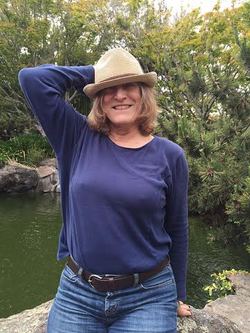 Bio: Jennifer Lagier has published eleven books and in literary magazines, taught with California Poets in the Schools, co-edits the Homestead Review, helps coordinate Monterey Bay Poetry Consortium Second Sunday readings. Newest chapbook: Scene of the Crime (Evening Street Press). Forthcoming books: Harbingers (Blue Light Press), Camille Abroad (FutureCycle). Website: : : Poetry by Jennifer Lagier : : 8/9/2016 Interview with Artist lyndi SalesAHC: Can you tell us a bit about your process, themes & inspirations? Lyndi: Currently I’m fascinated with the unseen, the unpresentable, idea around transcendence and altered states. I guess this stems from an interest in the metaphysical. It’s about a feeling of knowing something is there but not being able to see it. I’m fascinated with what we know about the universe and how scientists come to the conclusion they do. The data collected from far off galaxies’ by radio and satellite telescopes always seems so unclear and blurry like code really. And then the images that they release are so grand and awe inspiring. Sometimes I wonder how much those images have been manipulated. Also the idea of apperception and how we interpret what we see though our own filters. My process usually begins with reading books on science and at times philosophy. As I’m reading I often look up visual references’ to what I’m reading about. It could be a scientist theory of expansion or a microscopic image of a cell. The works evolve from that space. I love visiting science museums for inspiration. I recently had access to all the image data captured by the UCT Engineering department where they photographed various microscopic crystals. This inspired some of my recent work. In terms of my process, I have been working with a laser machine for a few years and I loved the unexpected results when things went up in flames. Surrendering control with no expected out come was good for me. Now I’m back to making with my own hands in a series of woven works and hand cut collages, which is a very different process, more meditative, and every row or piece is considered. I think my process has always been about accumulation. At the moment is the accumulation of thousands of individually hand cut pieces of paper to create a collage or the accumulation of rows and rows of rope in a woven work. 159/295 AHC: What first drew you to art? Was there a specific moment in your life or turning point where it became clear to you that you were being called to create? Lyndi: I was always creative as a child and I remember at age 7 we had a school art competition. I remember really wanting to win it and I knew who all my competitors were in the class. It was the one subject at school that I felt confident about. Although the idea of becoming an artist was something that only came much later after my undergraduate degree. I didn’t grow up in an environment that held an appreciation for art so I never really thought of it as a career option. Fortunes And Fortunes 320 x 40 x 320 mm. Lottery paper. 2008 AHC: The caption on your piece 'Hand dyed vilene' reads: 'The person you see physically is the tip of the iceberg' I love this line, I also think it's becoming increasingly harder for us to see beyond the surface of people, places & events these days. What are your thoughts about this? Lyndi: Yes that piece is actually inspired by a quote by the cellist Yo Yo Ma. I’ve had this post card from a science museum in Paris up on my mood board for ages. It’s of an iceberg where the majority of the ice is concealed beneath water. It reveals both the seen and the unseen. I’m always fascinated with what is hidden from view but what is such a significant aspect. Such as the ethereal body or the “higher self”. Or dark matter that comprises 80 percent of the universe, another dimension, and an aura around the physical body, a microscopic world or the ice hidden beneath the water of an iceberg. The hidden portion of the iceberg is evocative of the unseen. I think as our world becomes increasingly congested and as we are bombarded by so much to look at that we stop really looking. I know when I’m really busy I withdraw and stop engaging, I stop seeing people or I stop being able to read them. I stop hearing the birds sing and so on. Finding a balance is a challenge. I recently read an interesting book called the Sublime where Simon Morley highlights a world where technology, spectacle and excess eclipse former concepts of nature the individual and society. Chicken-Rat 500 x 900 x 200 mm. Mixed media. 2003 AHC: Art is a powerful reminder that things are complicated, that appearances and trite definitions simply leave too much out. Your work currently is exploring the role of chance in our lives, the fragility of our existence and increasingly, I would imagine, of the world around us. Do you think that art can serve as a catalyst for our unconscious? That it can put before us what we forget or all too easily try to avoid? That it complicates us? Lyndi: In the early stage of making the series of work on the Helderberg plane crash I often didn’t make reference to the crash, as it was a wound I didn’t want to reveal too much about. But strangely enough there were people who could just feel that the work was about loss. Often these people were experiencing their own loss and through seeing some of my works were able to access their pain. So yes I think art can certainly serve as a catalyst to the unconscious. 159/295 AHC: Who are some of your artistic influences? Is there anyone outside of the art world who has had a huge impact on your work, writers, filmmakers, philosophers etc? Lyndi: One of my favorite books is The Sublime a series of essays by various writers on artists. Also Networks by Bang Larsen Director David Lynch has been a huge inspiration. As a teenager I watched the “Twin peaks” series but later on I discovered that he is a huge advocate for transcendental meditation, which has been a source of interest in my work. I love the work of Director Terrence Malick (Tree of life and recently Knight of cups). I sometimes listen to lectures on the great philosophers as audio book while I’m working. I have made reference to Sartre “Being and nothingness” and Martin Heidegger. I’m currently reading Bill Bryson “History of everything” which is a starting point and then when I discover something really interesting I will read further on that subject. Distorted View The Sun Newspaper 80 x 101 cm. Newspaper. 2010 AHC: What is the first work of art you encountered that took your breath away? Lyndi: I’m not sure if this was the first one but I remember seeing my very first Van Gogh at the Yale University Gallery, it’s the work titled “ The night café”. I was moved to tears. It was such an emotional piece for me and yet I had seen it numerous times in books with little impact as a student but somehow seeing the painting in the flesh really made a huge impact on me. 159/295 AHC: Do you have any upcoming exhibits or new projects you'd like to tell people about? Lyndi: Yes I have a solo show At Circa Gallery Everard Read in JHB. The show runs from the 1 September until the 28th September Next year I will have a solo show with M Contemporary in Sydney at the end of February 2017. Research Images protein crystals by Emma kunz
All images other than research images © Lyndi Sales To see more of Lyndi's work or to find out about upcoming exhibits or projects visit her website at www.lyndisales.com |
AuthorWrite something about yourself. No need to be fancy, just an overview. Archives
April 2024
Categories |
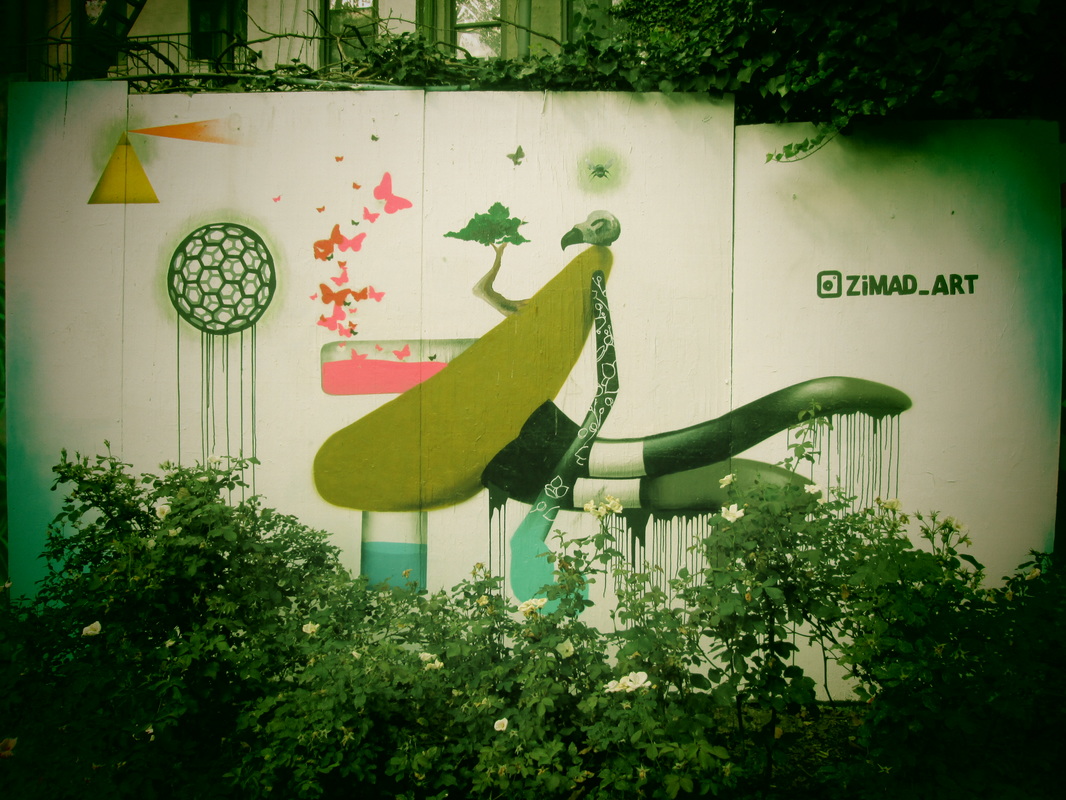
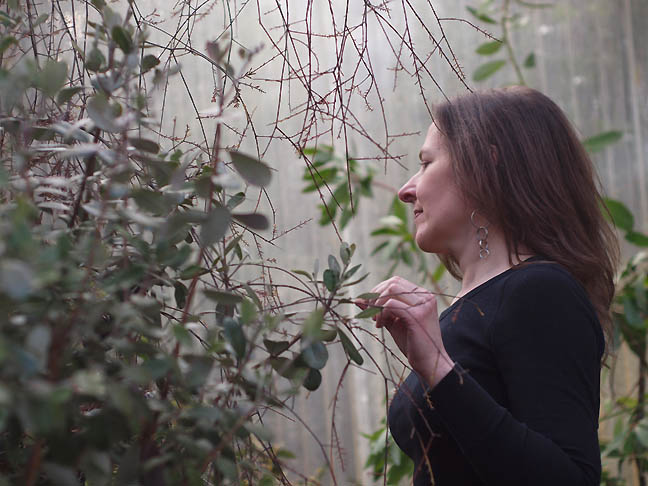

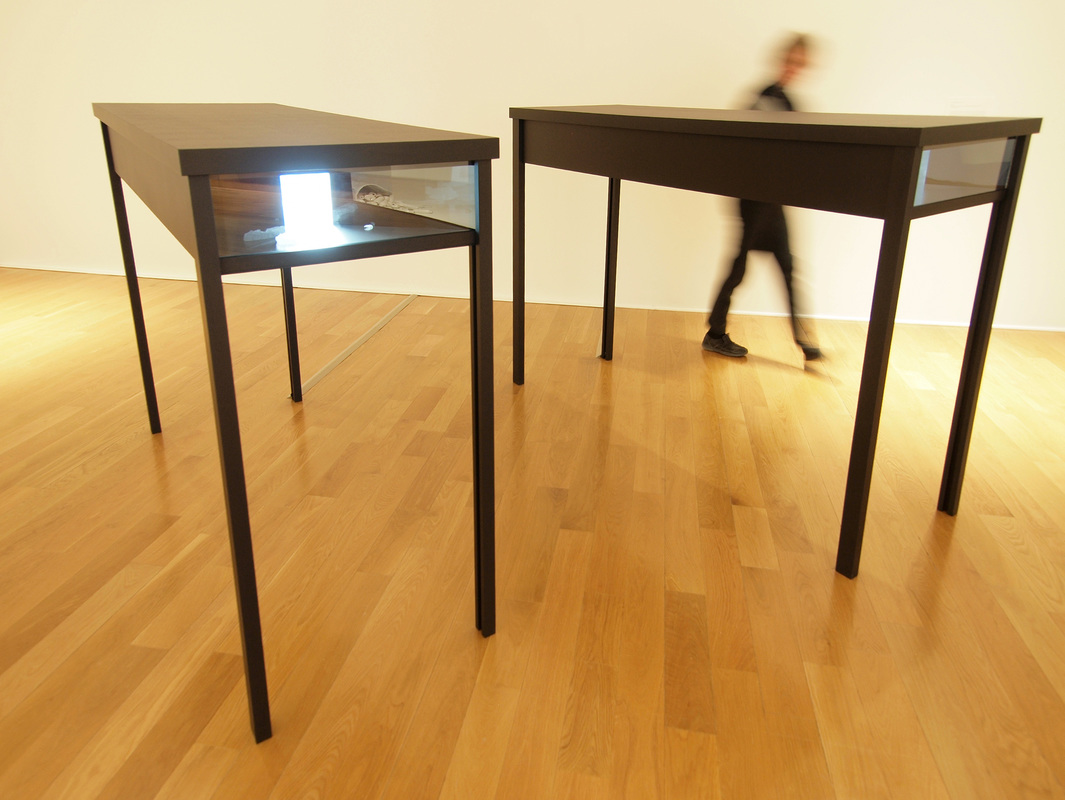
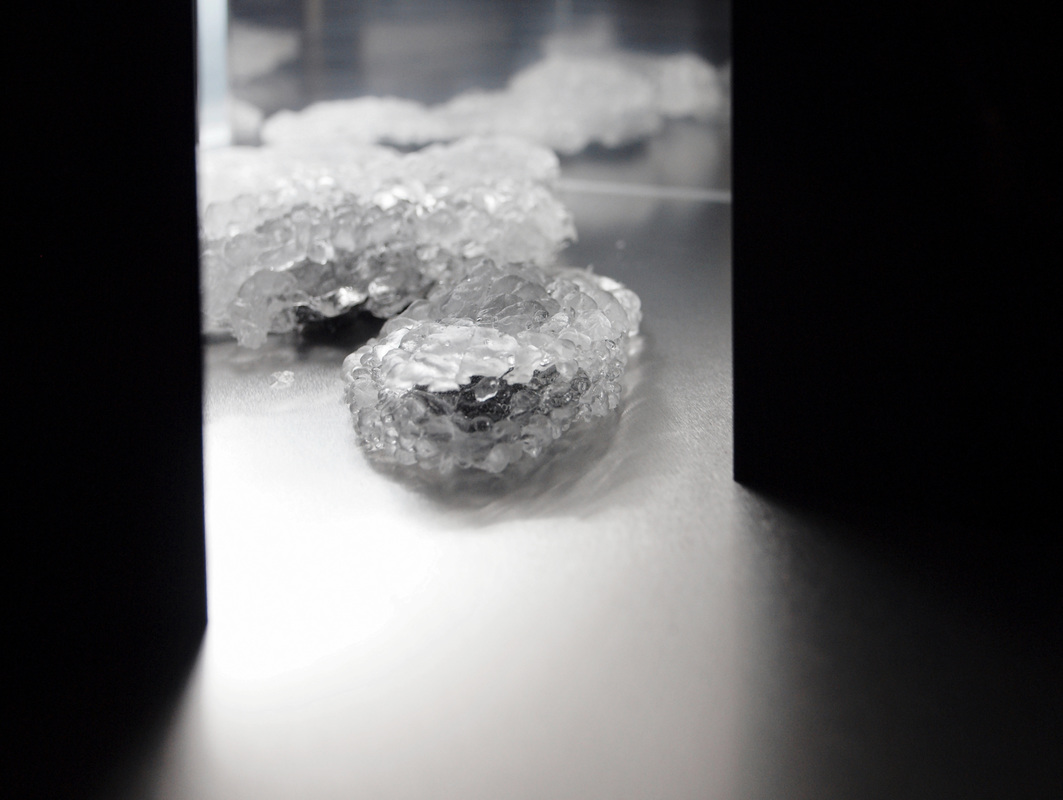
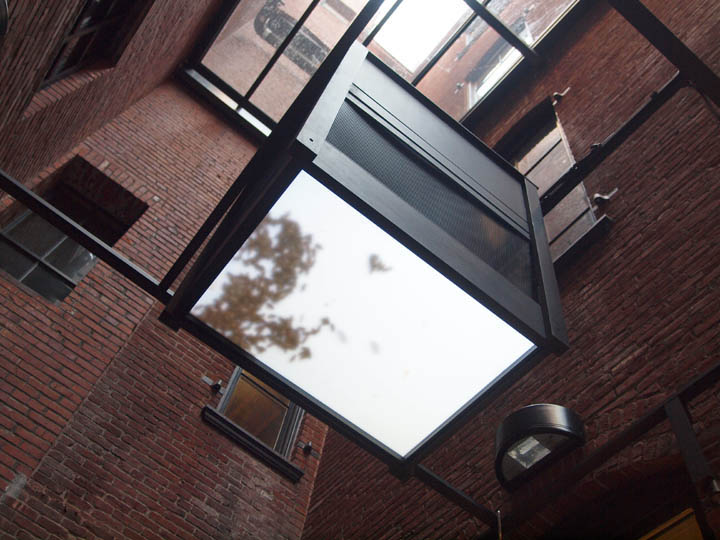
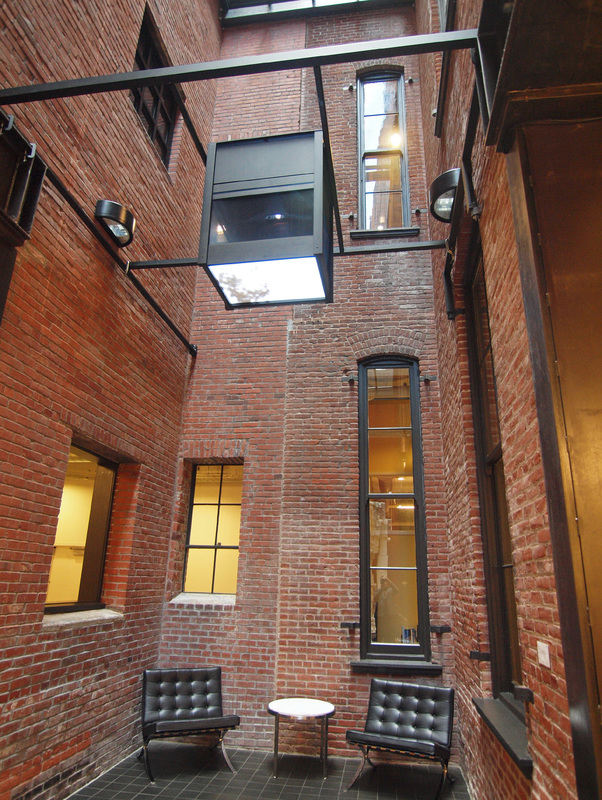
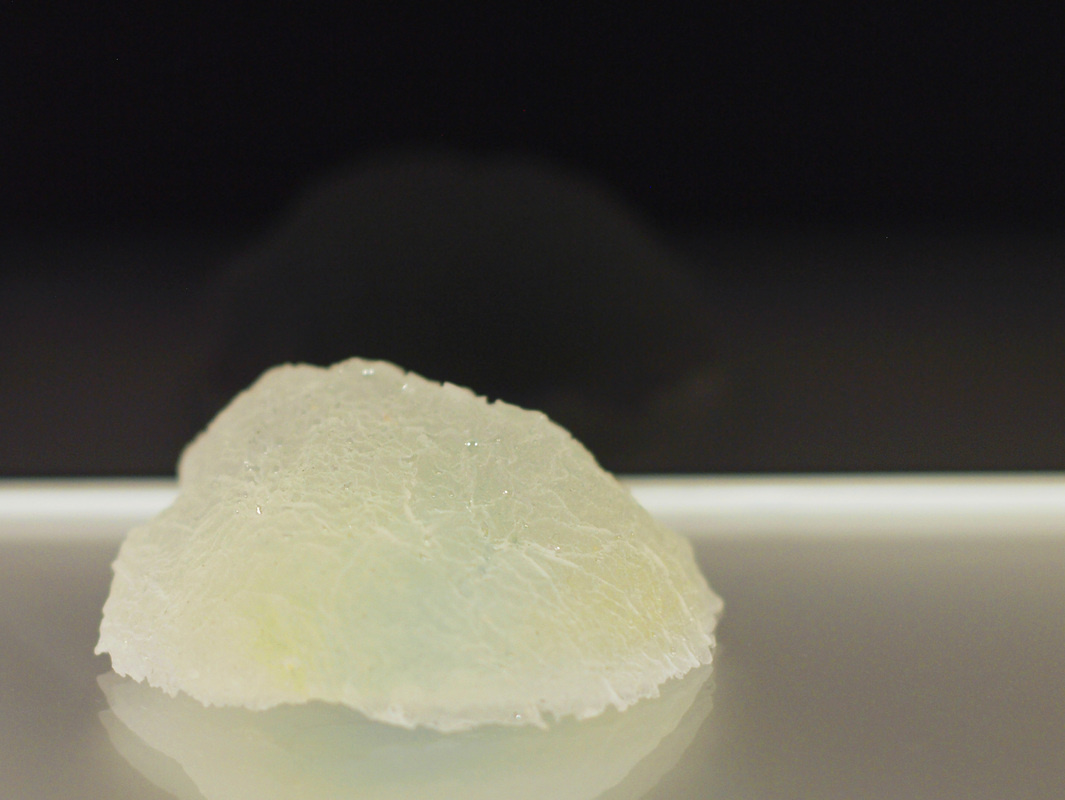
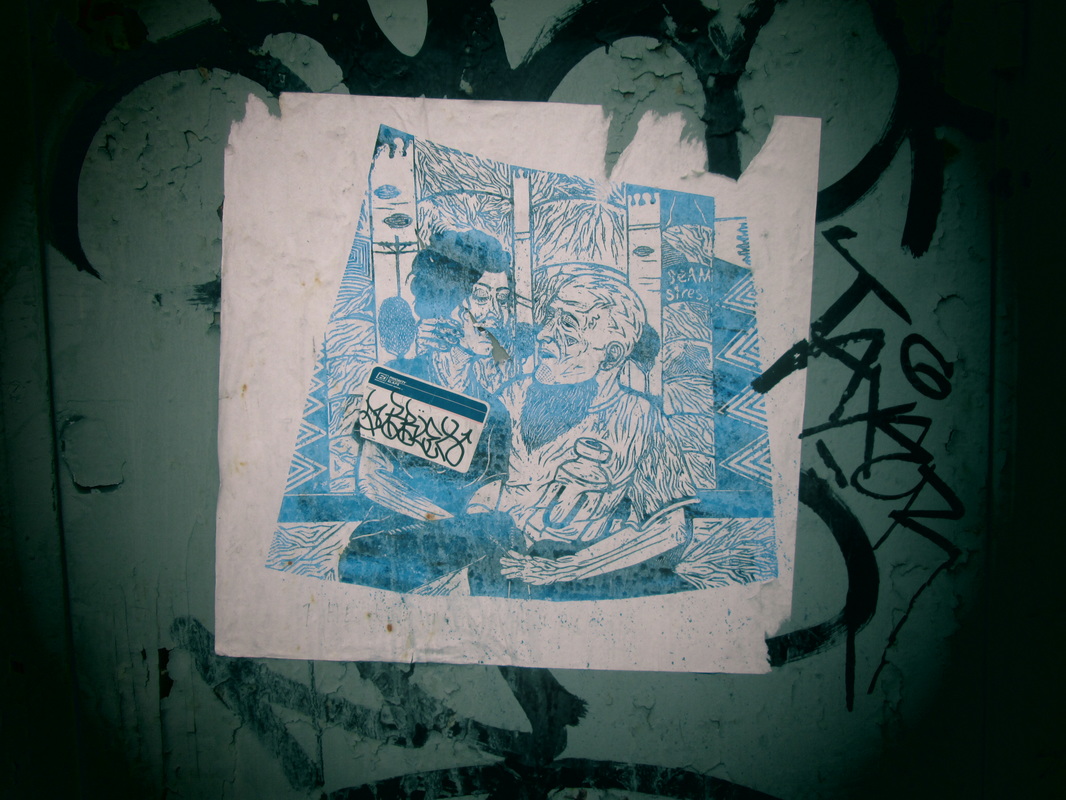
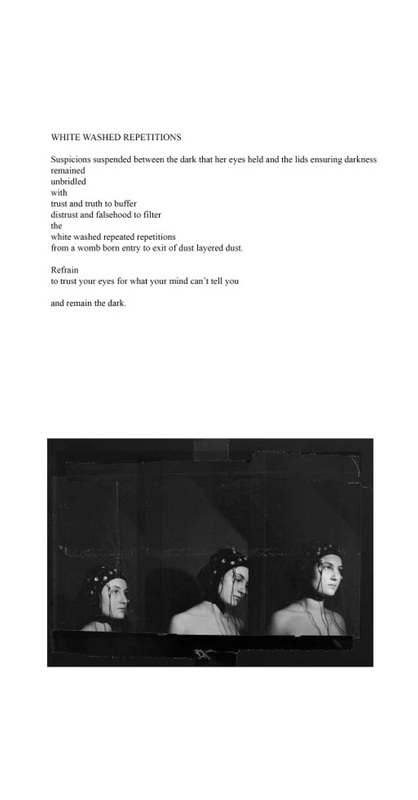
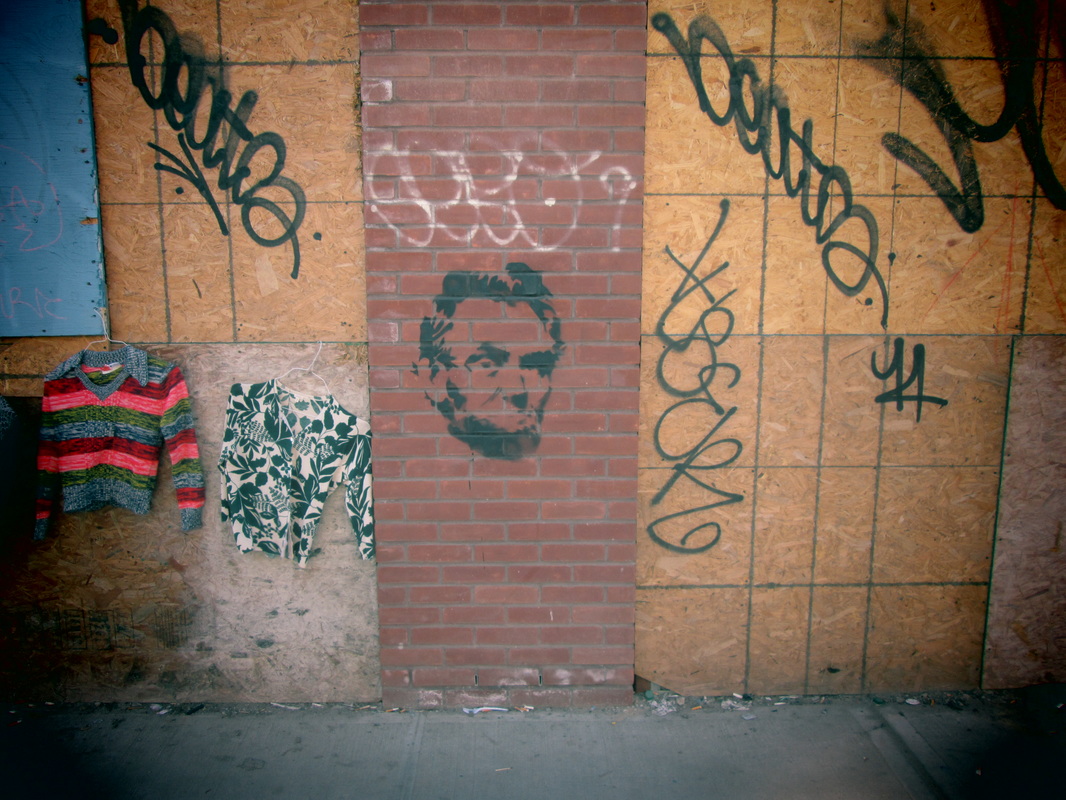
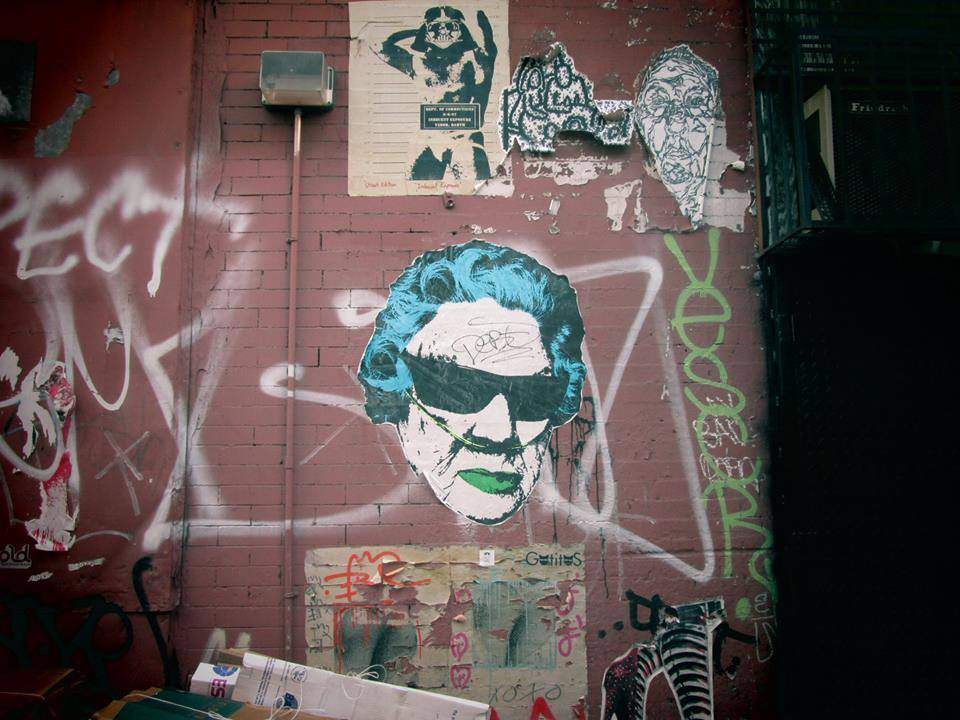
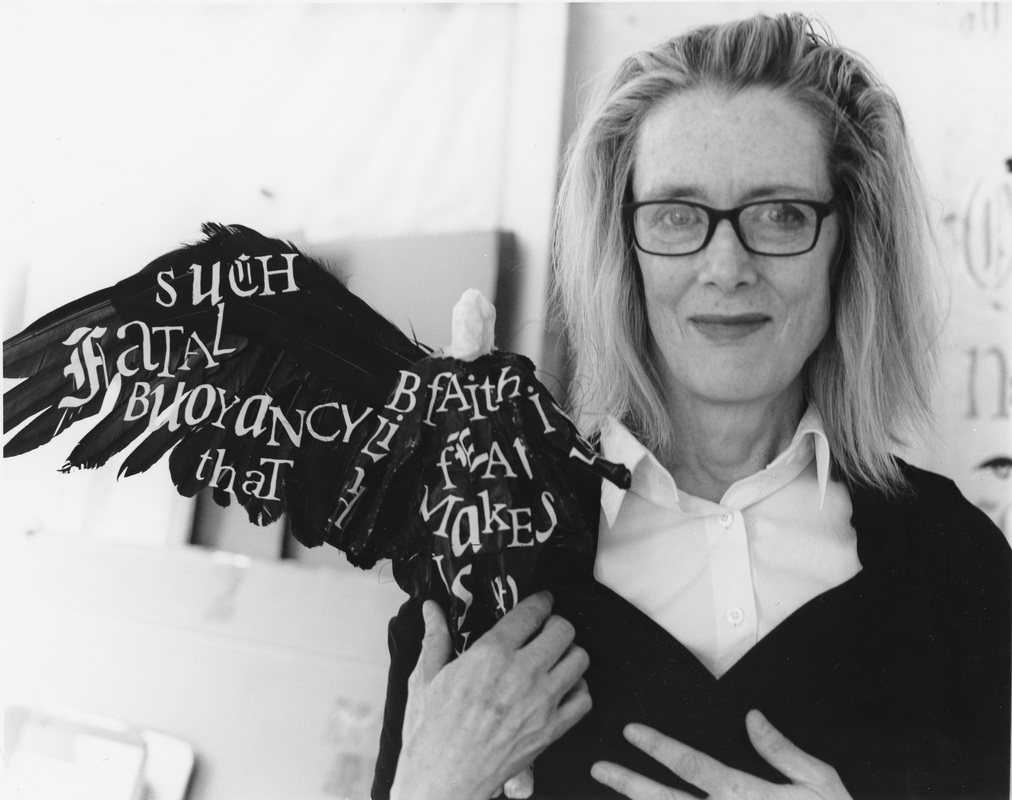
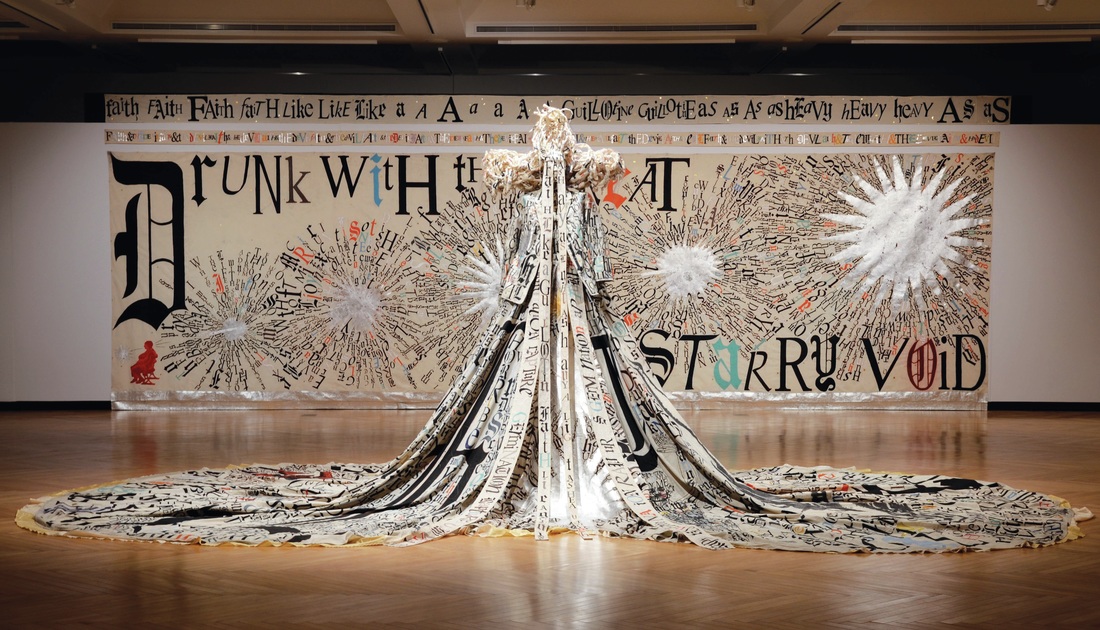
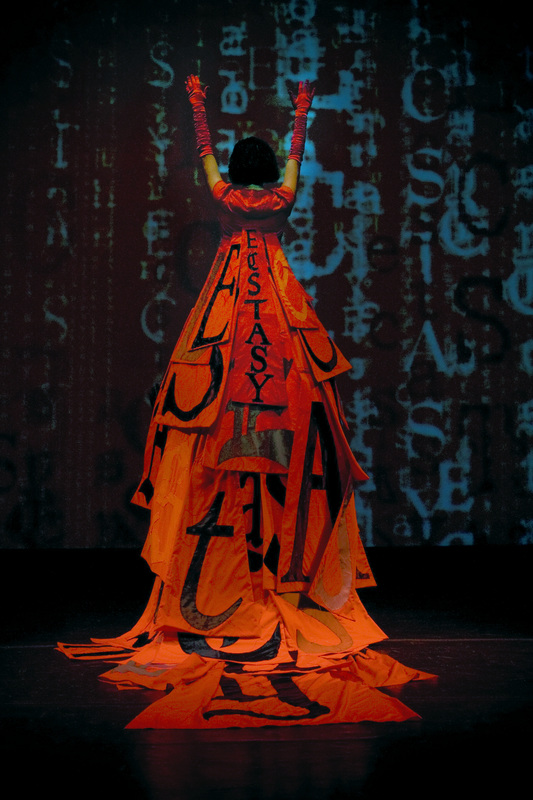
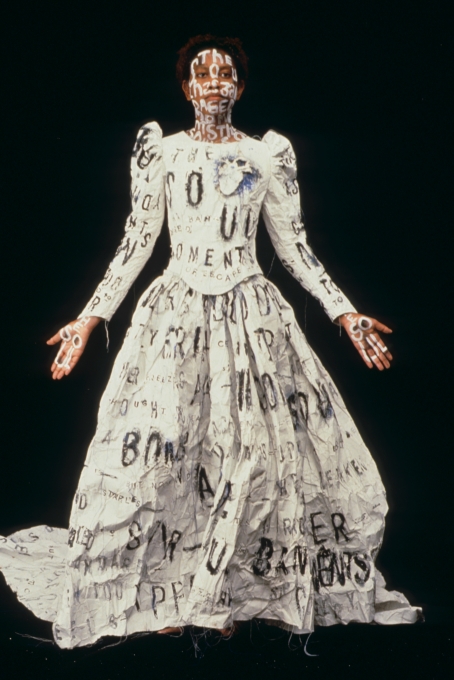
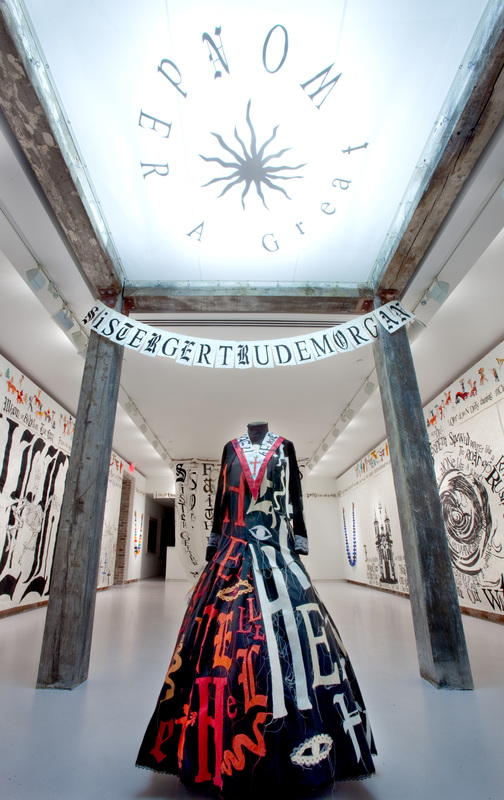
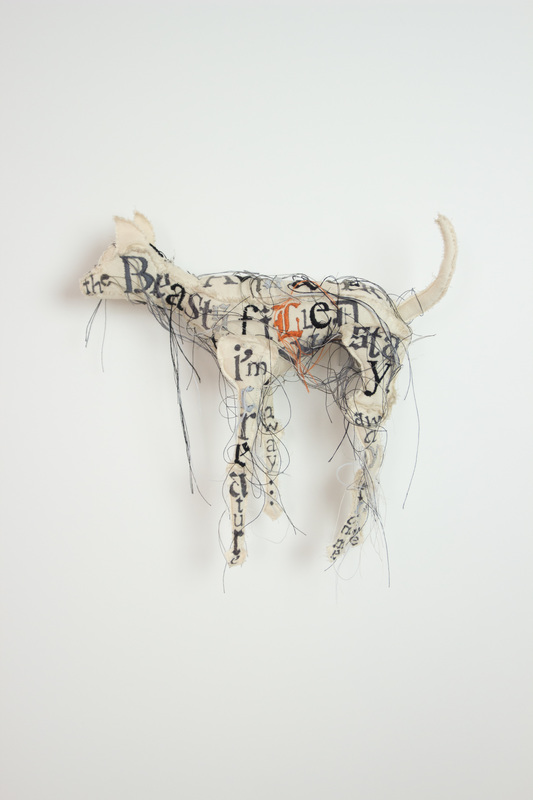
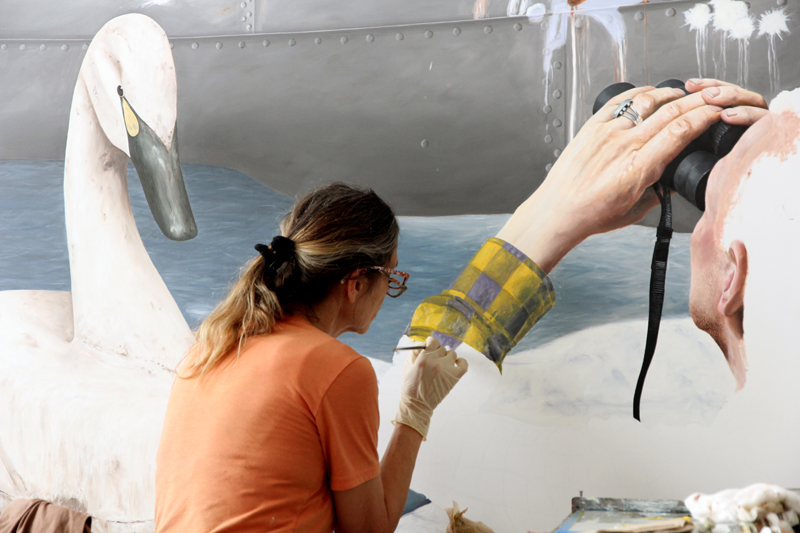
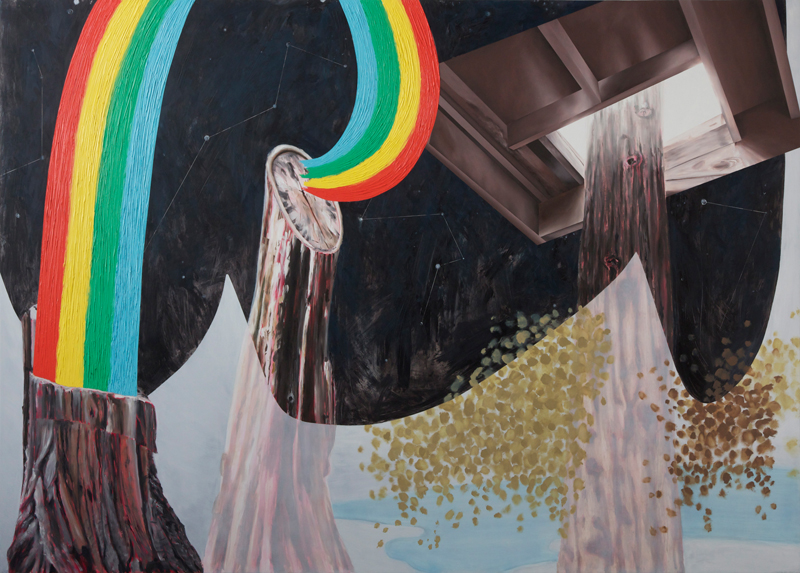
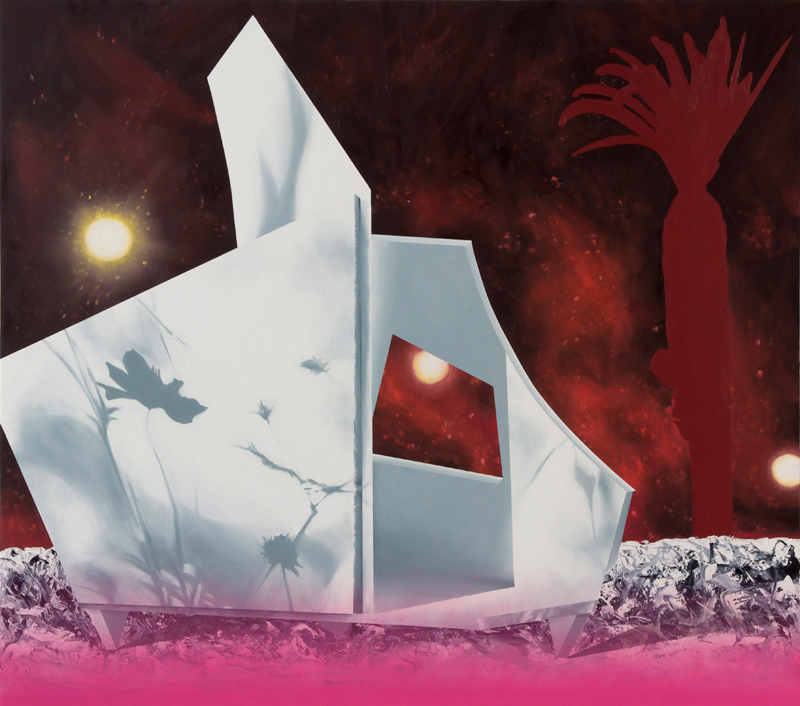
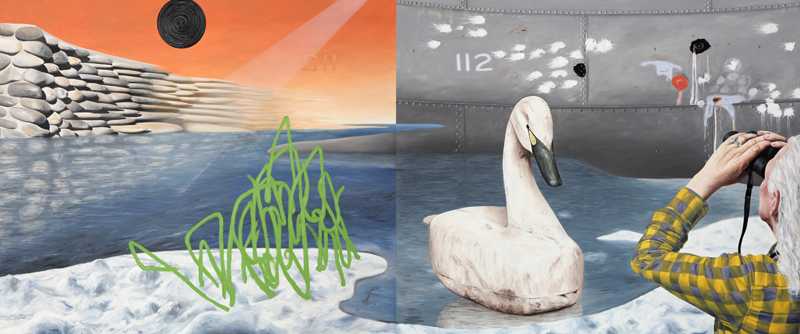
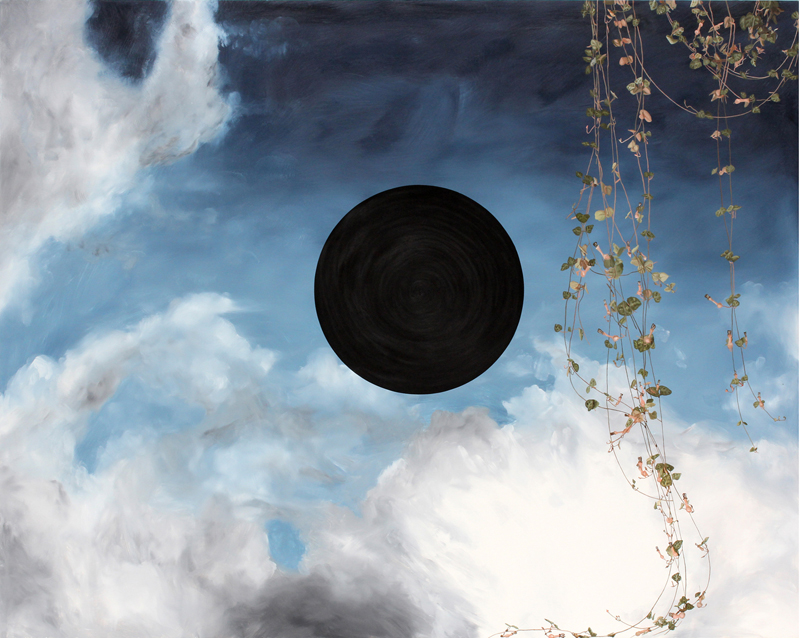
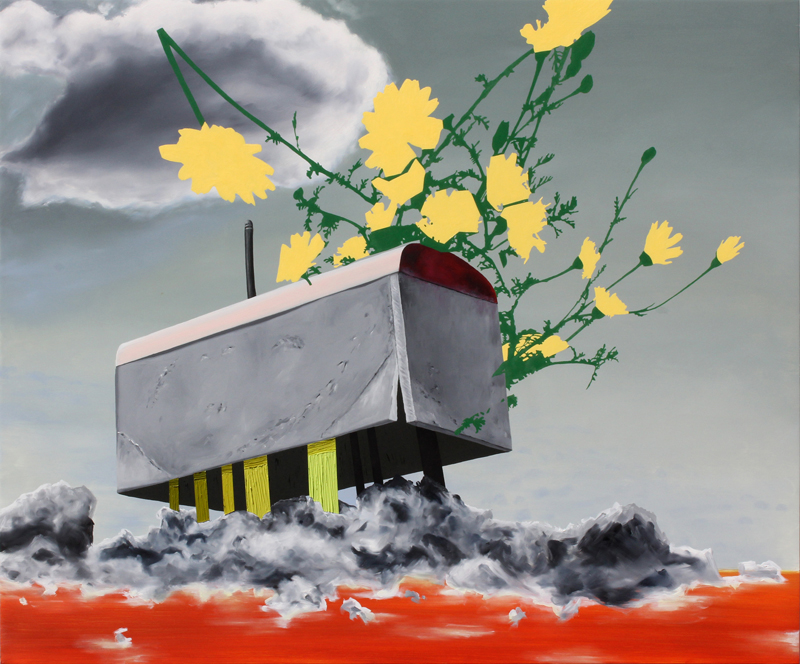
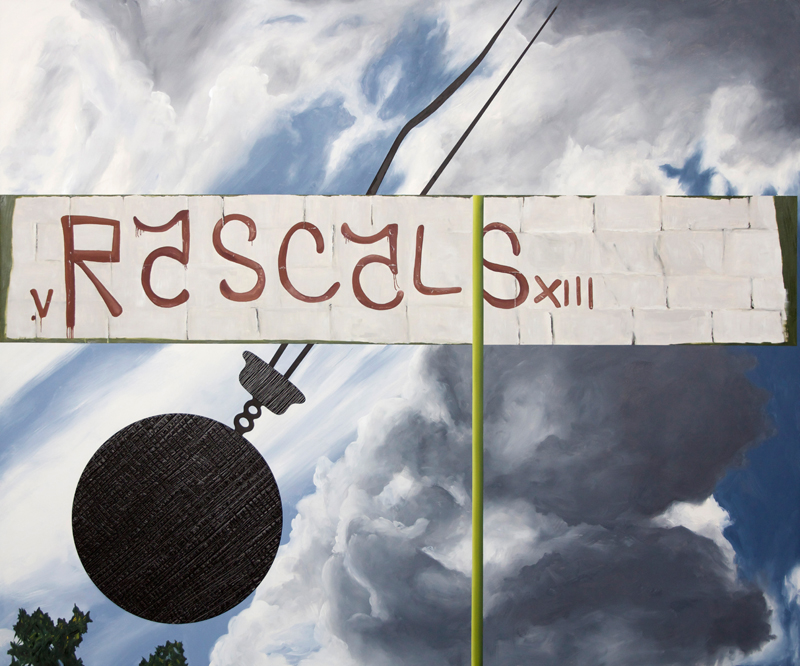
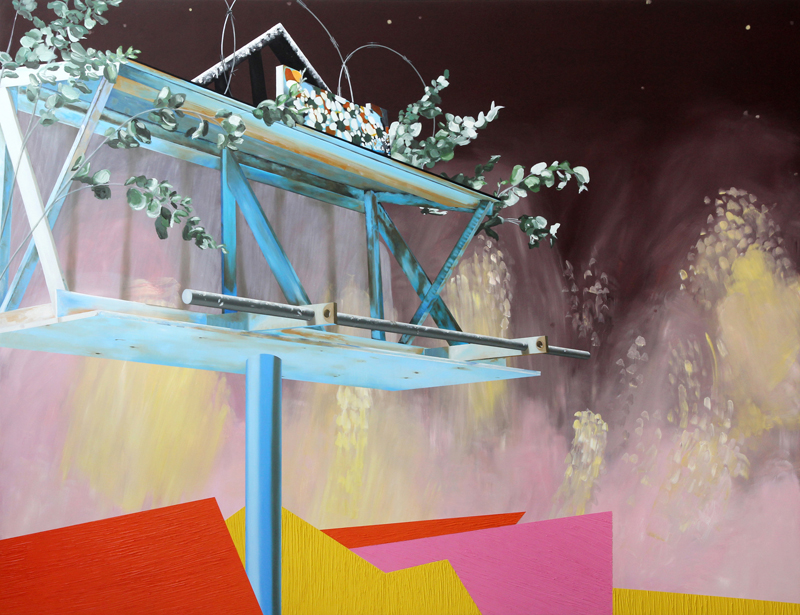
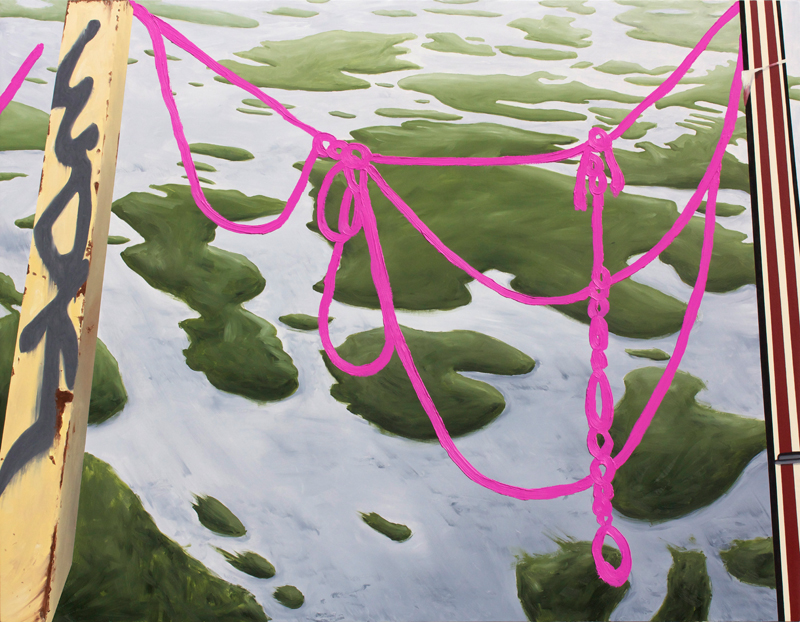
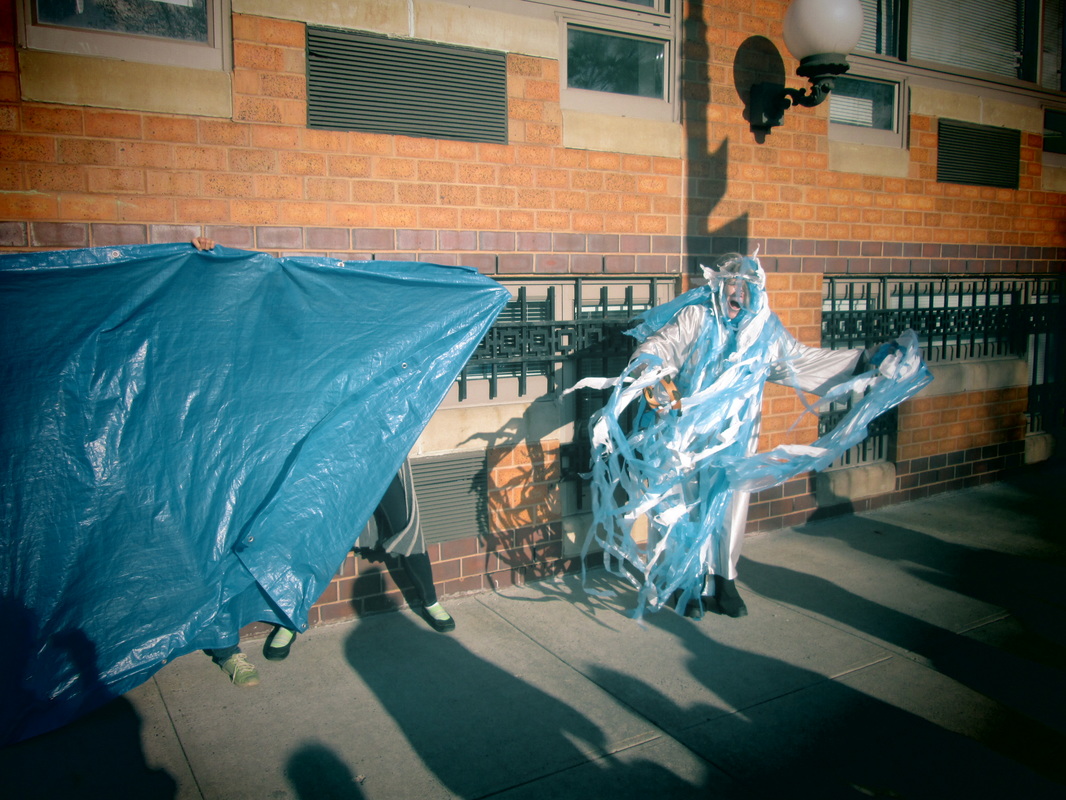
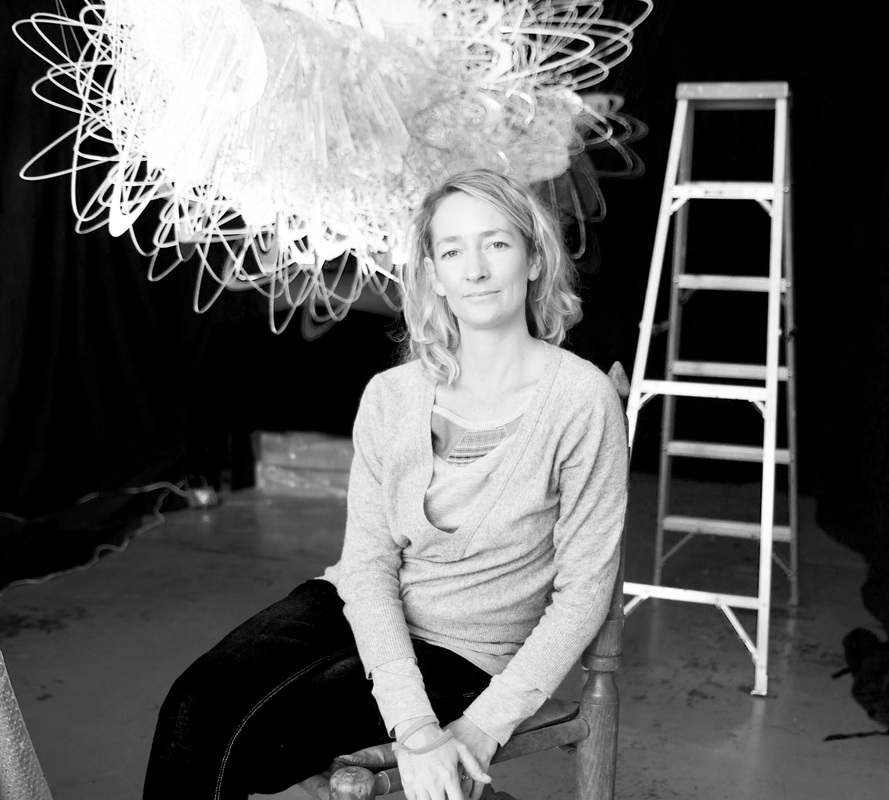
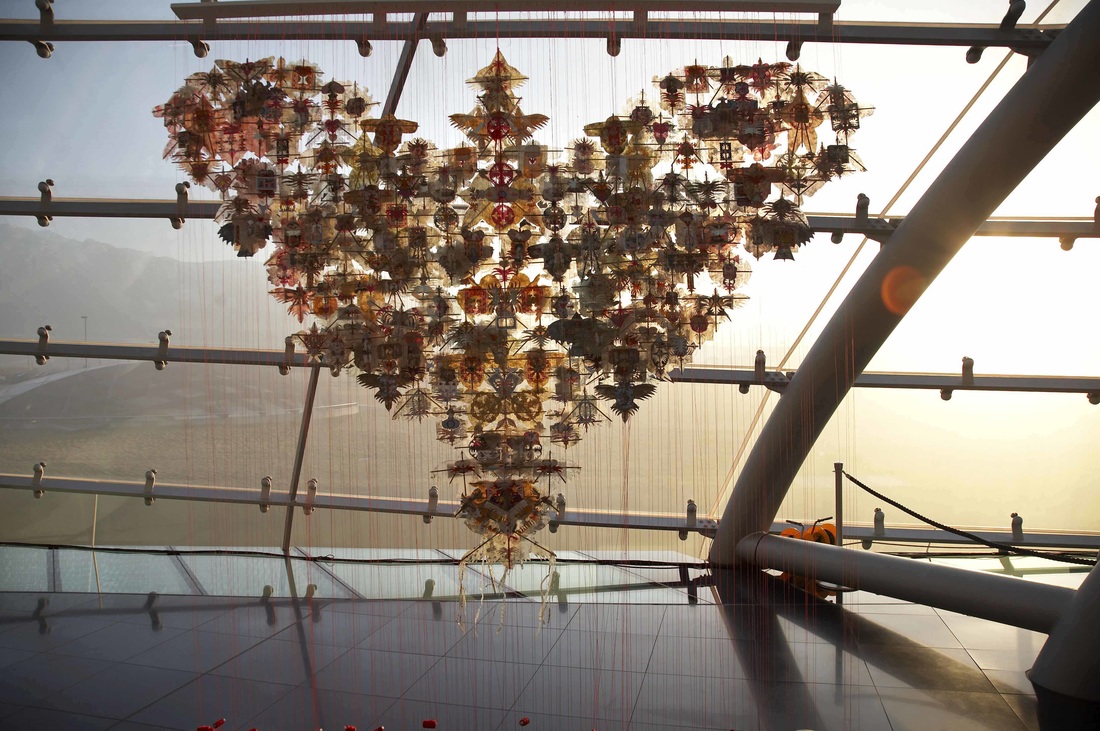
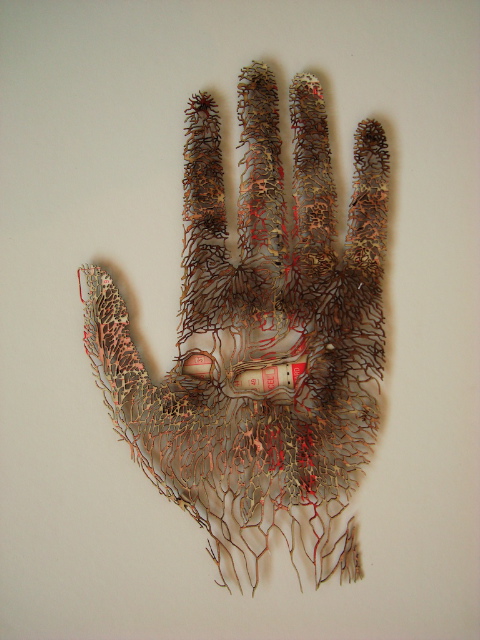
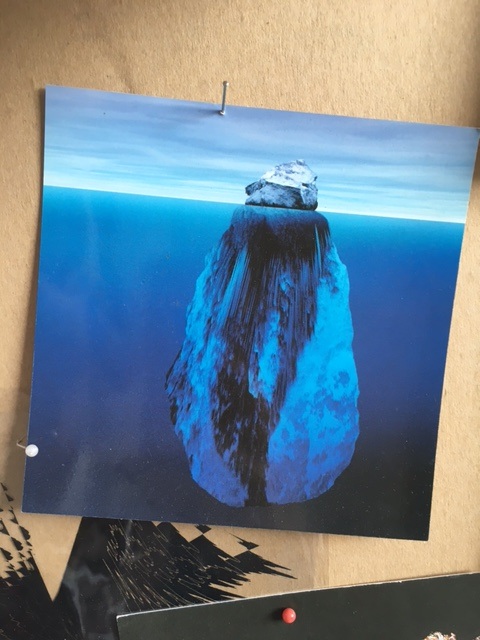
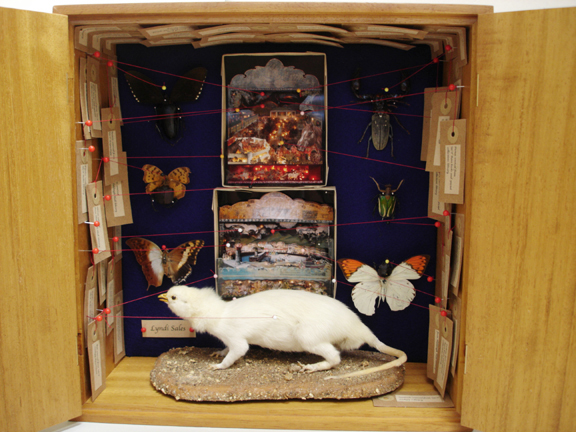
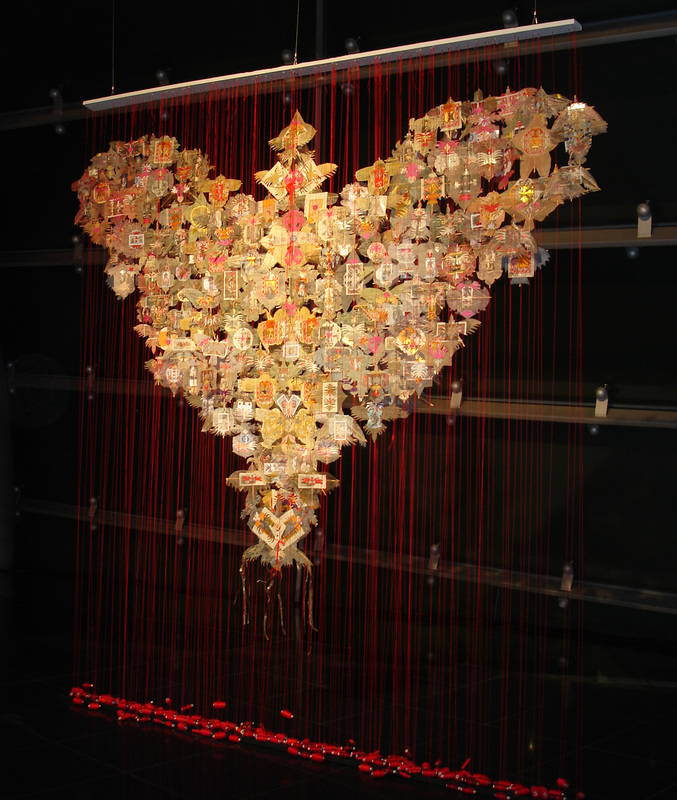
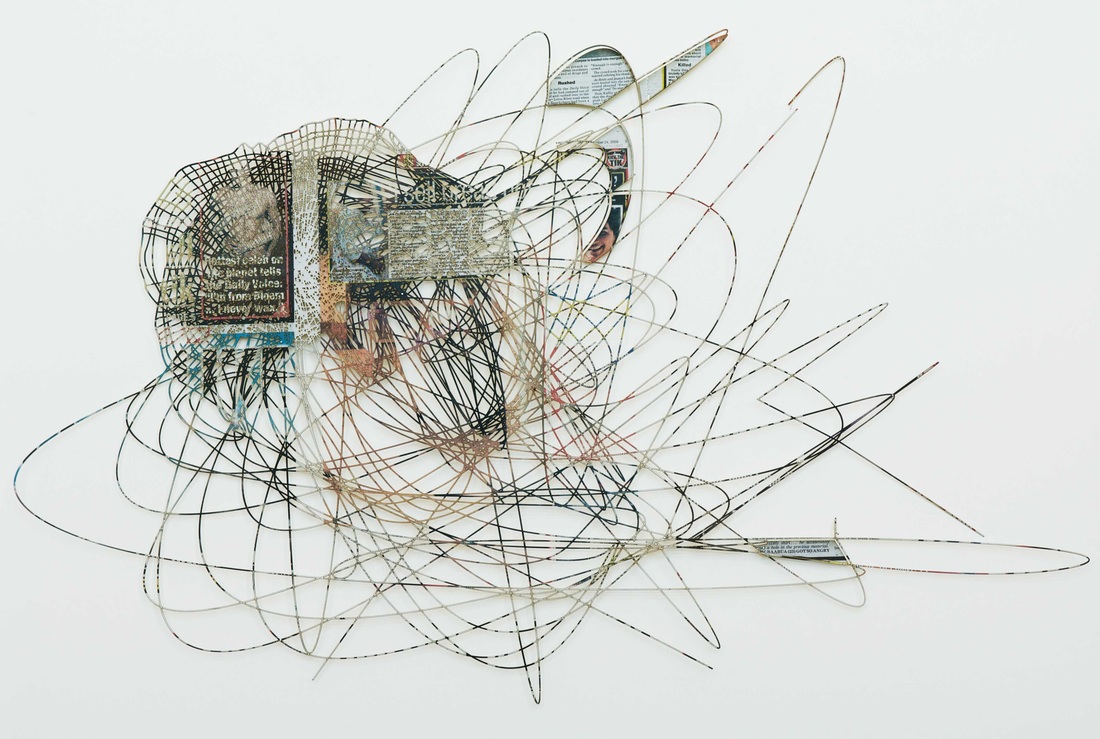
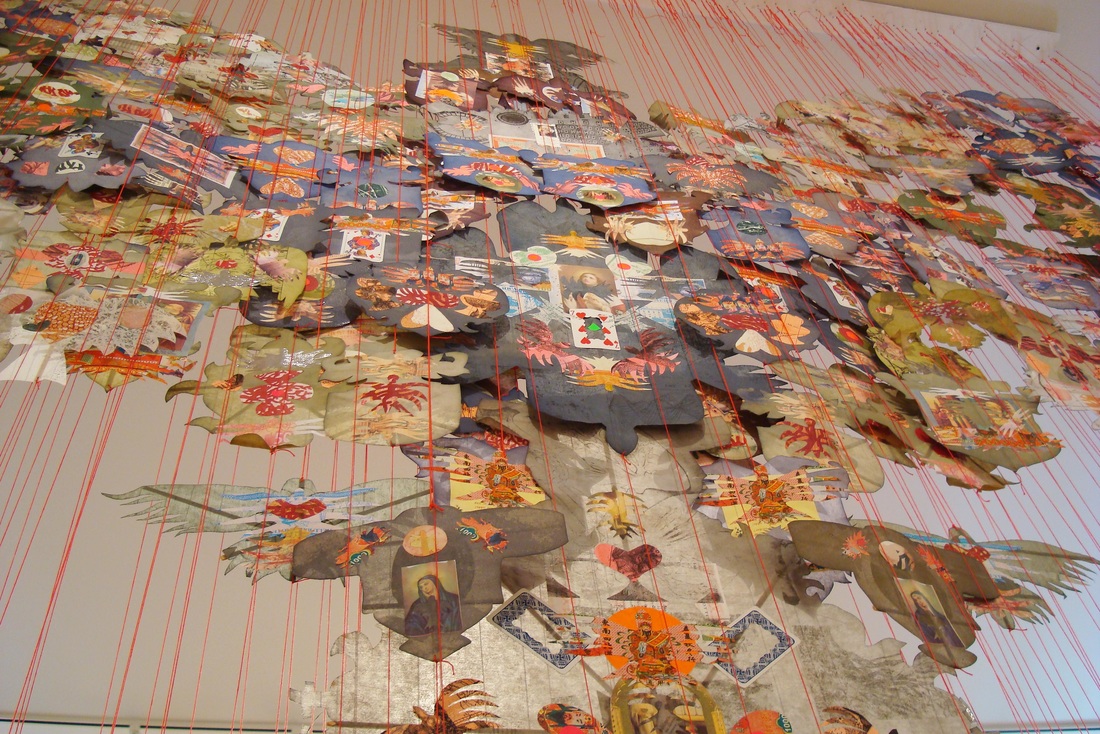
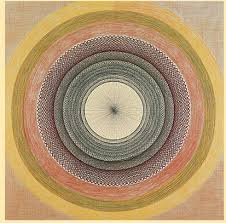
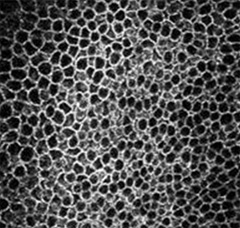
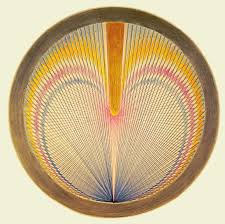
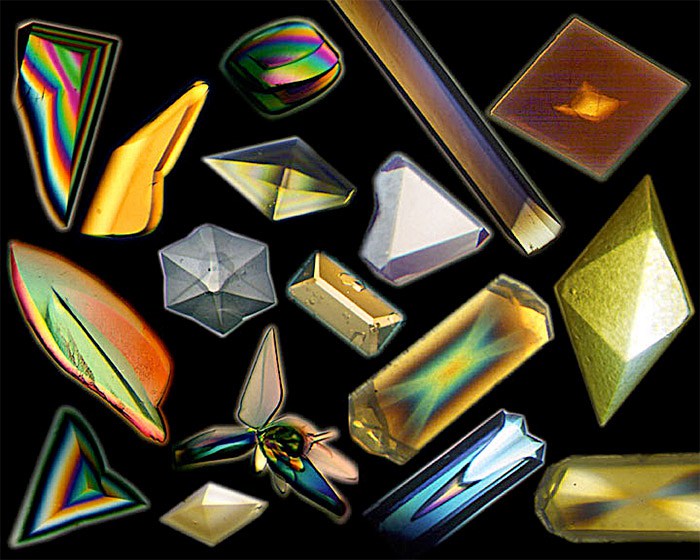
 RSS Feed
RSS Feed
